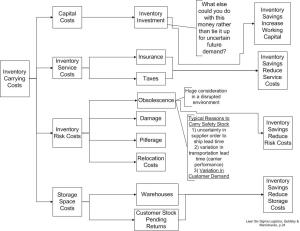If print book publishing is to survive in a rapidly digitizing world,
traditional models for decision-making around print must evolve into models that
better fit the times. Print book publishing has been driven by the vision of
continuous growth in volume--which generally translated into selling more copies
of more titles and (thus more printing). This older vision of growth--and the
fear of unfilled demand (which jeopardizes growth)-- translated into a business
model that sought profit primarily in economies of scale. Ever increasing print
volume led to a focus on reducing the unit cost of each print book, driving up
print quantities, which further drove efficiencies in offset printing, high
volume finishing (i.e., jacketing, binding, etc) and mass logistics and
distribution.The reality is that print book sales in the US peaked in 2007. The
pinnacle was reached by the final Harry Potter title, and sales of print books
have declined significantly each year since. At this point in the 21st century,
preserving a model driven by print book volume growth is folly. Instead, a new
vision through ensuring a sustainable eco-system around printed books should be
the goal. Central to this new vision is a rethink of traditional print quantity
decisions.
Fortunately, the conceptual model needed to replace the unit cost model is
readily available for adaptation: "total cost of ownership" or TCO. Rather than
using unit cost as the primary determinant of print quantity and profitability,
TCO introduces additional inventory related carrying costs that act to constrain
the attractiveness of lower unit costs that stem from higher print
quantities.
What print decision-making strategies complement a TCO model? The most
fundamental is that "less is more." Printing fewer copies more frequently is
the basic premise. To do this involves finding a new balance between simple p
& l cost analysis (unit cost is a key driver), and a more inclusive review
of the implications of purchasing inventory (TCO). Reducing the size of
inventory investment occurs transaction by transaction. TCO is an approach that
requires consistency and discipline, as well as timely access to relevant demand
and inventory data. Book publishers need to realign metrics, accounting, and
incentives to reinforce the TCO vision.
The drawing below shows the extent of inventory carrying costs that are in
addition to unit cost. As the shift to digital accelerates, capital, service,
risk, and storage costs need to be considered with greater rigor rather than be
treated as "external" to a print quantity decision (as was the case too often in
the growth era). Of all of the cost factors shown below, the inventory risk
costs, primarily the risk of obsolescence, are huge in a disrupted environment.
Customer demand for print is rapidly changing, and is much less predictable
than before.

- non-unit cost inventory costs
Depending on the level of activity for the title, reducing print quantities
typically triggers the need for short-run digital print solutions. Book
printers need to increase their capabilities/capacity to make economical digital
print books. Publishers and their printing partners need to utilize distributed
print networks to enable printing closer to where the book is needed, saving
shipping time and cost. As more print titles move towards being considered
"long tail", print on demand services (combined with direct fulfillment) will
comprise a larger piece of the pie. TCO also calls for better demand
forecasting for titles where inventory must be held. The forecasts should be
based on updated market models that reflect the new realities of the print book
marketplace.
Additionally, given shrinking print revenues for the foreseeable future,
publishers are also challenged to financially support the staff and systems
required to manage the print side of the business. This could open the door to
investments supporting more automated, streamlined print transactions. Pressure
to reduce staff costs could lead to mutually advantageous transfer of staff and
functional duties from publishers to printers or other 3rd parties. Whether
this takes the form of limited business process outsourcing or more
comprehensive vendor managed inventory programs, it's clear that there are many
opportunities for creative solutions to the challenge of sustaining the print
book ecosystem.
(Part 1 of a multi-part series) originally published 3/5/12 on 'From the Whiteboard"




